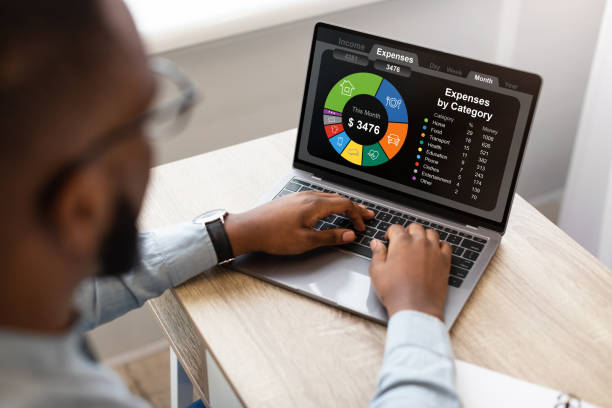
8 Tips to Become a Savvy Spender
We work hard to earn money, so we should be free to spend it as we wish. Right? However, thinking ahead and learning to be wise spenders is paramount to success. By becoming savvy spenders, we can keep more of the money we earn, which allows us to save for unexpected expenses, invest in stocks, or cover our regular bills, such as our mortgage.
Please note that before we spend our money it is important that we pay ourselves first, I have written about it in “8 Lessons from the Richest Man in Babylon.”
Becoming a savvy spender is an effective way to control our finances. Let’s explore eight simple strategies to enhance our spending habits and harness the benefits of wise spending.
1. Say No to Plastic

We live in an economy that thrives on credit, contributing to financial struggles. The average American family has about $16,000 in credit card debt. Cash is always best for savvy spending.
If you struggle with managing finances, avoid using credit cards for everyday purchases. Credit cards make it hard to track spending, leading to unintentional overspending. When using cash, you stop when you run out.
If you use a credit card, check your statement after each purchase to stay aware of your spending. Always pay off your balance in full each month. If you can’t do this, it’s a sign you shouldn’t be making that purchase.
An alternative to using a credit card is to use a debit card. A debit card is similar to cash because you can only spend your money in your bank account, which means there are no unexpected charges at the end of the month.
While credit cards offer various benefits, cash remains essential for those learning to manage their finances.
If you decide to get a credit card, avoiding major credit card companies is best. These companies often prioritize profit over customer care and may charge interest rates of 25% or higher. Instead, consider opening a credit card through a credit union, which cannot charge more than 18% interest by law!
Another rule of thumb on credit cards is less is more. Open only a maximum of two credit cards. Avoid opening department store credit cards, as they have the worst interest rates.
2. Learn How to Shop Around

Patience is a virtue. Instead of rushing to buy an item from the first store you visit, check at least two other stores to find better prices or discounts. Also, a slightly used or refurbished item can often be found for around 60% of the original price. An item the manufacturer has refurbished functions the same and has the same warranty as a new item, which could save you money.
Another effective way to shop is by comparing prices with online stores. With our smartphones (I use my iPhone), we can quickly see how prices at brick-and-mortar stores stack up against online prices. Often, buying online is more economical, especially when free shipping is available. Check out the Amazon app or Google, which allows you to scan UPC barcodes to find the best prices online. It is worthwhile to compare prices while walking around department stores. Often, online stores offer additional discount codes, too!
3. Don’t be a Spontaneous Shopper
We may want to make purchase decisions at the “spur of the moment,” but this often leads to buyer’s remorse later. The habit of impulse shopping is difficult, especially if you’re low on cash at the end of the month because you can’t resist shopping at your favorite store.
It is important to become a savvy shopper and give yourself time—around three days—before making a significant purchase. This waiting period allows you to assess the purchase’s importance and understand its priority within the bigger picture.
One effective way to avoid impulse buying is to delay the purchase. You can tell yourself, “I’ll wait until next time.” Often, you’ll find that you no longer desire the item. However, if you still want it after the wait, shopping around for the best deal is what savvy shoppers do.
4. Buy in Bulk When Appropriate

If you come across specific products you regularly use on sale, consider buying them in bulk. Stocking up on these items can help you save money in the long run, as you won’t have to purchase them later at a higher price. This strategy works well for foods with a long shelf life, clothes, and cosmetics.
When we stock up on items we use regularly, such as toilet paper and canned goods, we can ensure we get the best prices. Stores like Costco and BJ’s are excellent places for bulk shopping. However, we must be cautious about purchasing items we don’t need. It’s helpful to create a list of the items you regularly use so you can focus on buying what’s essential. Additionally, purchasing bulk items online can be a great option.
5. Track Your Expenses
Knowing where your money goes is one of the most important aspects of becoming a savvy spender. It can be challenging to manage your spending if you’re not tracking your expenses. You can write down your daily expenses with a pen and paper or use software designed to help you keep track. Review your records closely at the end of each month, and you might be surprised to see how many unnecessary expenses you have accumulated.
6. Learn How to Budget

Read our “8 Lessons to Create a Budget.”
If you have a clear picture of your monthly spending, you are in an excellent position to create a budget. Having a monthly budget will help you manage your expenses while still having some cash left over at the end of the month.
For instance, if you spend around $50 monthly on coffee, consider cutting it down to half that by making coffee at home. While this may not seem like a significant change, it adds up to $300 in savings in a year.
Creating a budget and analyzing our spending habits can help us become more of a savvy spender.
7. Calculate Cost Per Use
Before making a purchase, it’s important to evaluate the true value of a product and consider how often you will use it. For instance, if you enjoy skiing but only go twice a year, it might be more cost-effective to rent equipment rather than buy it. Similarly, if you only use the treadmill at the gym, investing in your own treadmill for home workouts could be a smarter choice than continuing to pay for a gym membership.
8. Buy Quality Not Quantity

Have you ever tried to shop for an item only to realize you already have one at home? It’s common to forget about things after a few months, especially if we don’t use them regularly. Items like coats and gloves, which are only needed in winter, often get stored away in the basement or attic until the next season. By the time winter arrives again, there’s a good chance you’ve forgotten about your winter clothing.
To avoid this, consider buying fewer items and focusing on quality over quantity. A well-made product can last a long time, while cheaper items may wear out quickly, forcing you to replace them every couple of years. A savvy shopper opts for fewer high-quality items that they can keep for a long time.




